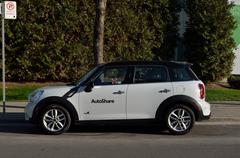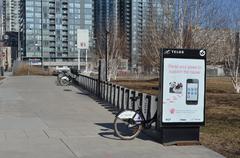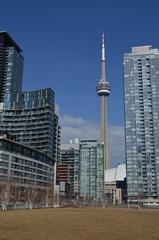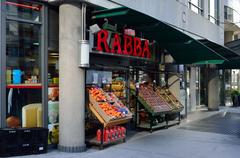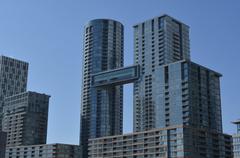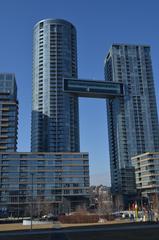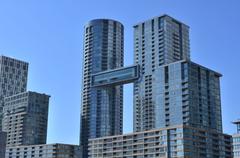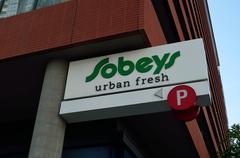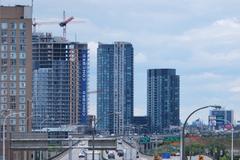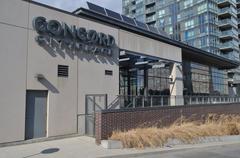
CityPlace Toronto Visiting Guide: Hours, Tickets, and Attractions
Date: 15/06/2025
Introduction
Nestled in downtown Toronto, CityPlace is one of Canada’s most significant master-planned communities. Once the site of Toronto’s bustling Railway Lands, CityPlace has transformed into a vibrant urban neighborhood characterized by modern architecture, extensive green spaces, and a thriving residential and cultural scene. Whether you’re a visitor seeking Toronto’s top attractions or a local exploring your city, CityPlace offers a unique blend of history, community, and accessible amenities.
This guide covers CityPlace’s historical origins, urban development, major attractions, practical visitor information, and connections to nearby landmarks, equipping you with essential tips for a memorable visit. For more background and updates, see RENX, Canada Construct Connect, and the Neighbourhood Guide.
Contents
- Historical Background of CityPlace
- Urban Development and Transformation
- Visiting CityPlace: Attractions and Visitor Tips
- Demographics and Lifestyle
- Future Developments
- Integration with Toronto’s Urban Fabric
- Nearby Historical Sites: The Distillery District
- Frequently Asked Questions (FAQ)
- Summary and Key Takeaways
- Sources
Historical Background of CityPlace
From Railway Lands to Urban Core
CityPlace occupies 200 acres of Toronto’s former Railway Lands, once crucial to the operations of Canadian National and Canadian Pacific Railways (RENX). As rail use declined, these centrally located lands became prime candidates for redevelopment.
Vision and Planning
In 1997, Concord Adex acquired 55 acres of the Railway Lands, envisioning a high-density, mixed-use residential community. Urban designers prioritized connectivity to downtown, integrated streets, and abundant public spaces (Canada Construct Connect). Today, CityPlace is defined by its tower-and-podium architecture, green spaces, and community amenities.
Overcoming Challenges
Initial skepticism about residential viability was overcome by focusing on social infrastructure, accessibility, and diverse amenities. These efforts helped CityPlace emerge as a vibrant, livable neighborhood (RENX).
Urban Development and Transformation
- Scale: CityPlace spans 55 acres, bounded by Bathurst Street, Lake Shore Boulevard, Front Street, and Blue Jays Way/Rogers Centre (RENX).
- Skyline: As of 2025, 31 residential towers house over 12,000 units, alongside retail, offices, schools, and community centers (Canada Construct Connect).
- Design: The community emphasizes walkability, integrated streetscapes, and connections to downtown.
- Public Spaces: Canoe Landing Park is a central green hub, featuring signature public art by Douglas Coupland (History of Toronto).
Visiting CityPlace: Attractions and Visitor Tips
Major Attractions
-
Canoe Landing Park:
An 8-acre park featuring playgrounds, sports fields, walking trails, and iconic art like the “Red Canoe” sculpture.- Hours: Dawn to dusk, free entry.
- Details: Art installations include fishing bobbers and a heart-shaped labyrinth (Neighbourhood Guide).
-
Puente de Luz (Bridge of Light):
A striking yellow pedestrian bridge connecting CityPlace to the downtown core.- Hours: Open 24/7, free.
-
Retail and Dining:
Fort York Boulevard features shops, restaurants, and cafes, with King West and Queen West nearby for more extensive options. -
Community Events:
Look for seasonal festivals, outdoor movies, and markets in Canoe Landing Park and public spaces. -
Photographic Spots:
The Red Canoe, Puente de Luz, and panoramic city skyline views from the waterfront are must-captures.
Visitor Information
-
Accessibility:
CityPlace is fully wheelchair-accessible with smooth pathways and accessible public transit (Wikipedia). -
Getting There:
- Transit: TTC streetcars 509, 510, and 511; Union and St. Andrew subway stations are nearby.
- Cycling: Bike Share Toronto stations and bike lanes available.
- Parking: Paid lots are limited; public transit is recommended.
-
Tickets:
No admission required for public spaces. Tickets are needed for nearby attractions like the CN Tower and Ripley’s Aquarium.
Demographics and Lifestyle
- Population: Over 15,000 residents, mostly aged 25–44.
- Community: High walkability, pet-friendly (23% of households have pets), and an average household income of $124,000 (RENX).
- Lifestyle: Residents enjoy proximity to parks, entertainment, and major Toronto districts.
Future Developments
- Canada House:
Two towers (65 and 75 storeys) completing the CityPlace skyline (Canada Construct Connect). - Affordable Housing:
A 29-storey building at 150 Queens Wharf Road will provide 282 rental units (RENX). - Under-Gardiner Project:
Planned retail and community spaces beneath the Gardiner Expressway.
Integration with Toronto’s Urban Fabric
CityPlace’s walkability, transit access, and proximity to major attractions—including the CN Tower, Rogers Centre, and Toronto Waterfront—make it a gateway to the city’s cultural and entertainment districts (BrandVM).
Nearby Historical Sites: The Distillery Historic District
Overview
Located just east of downtown, the Distillery Historic District is a pedestrian-only area known for Victorian industrial architecture and a lively arts scene. Once the Gooderham & Worts Distillery, it is now a National Historic Site with galleries, boutiques, cafes, and year-round events.
Visitor Details
- Hours: Generally 10:00 AM – 7:00 PM for shops and galleries; restaurants may stay open later.
- Admission: Free entry. Tickets required for special events (e.g., Toronto Christmas Market) and guided tours.
- Attractions: Historic buildings, Mill Street Brewery, artisan studios, and seasonal festivals.
- Accessibility: Wheelchair accessible, though some historic buildings may have limitations.
For more, see the Neighbourhood Guide.
Frequently Asked Questions (FAQ)
Q: Is CityPlace open to the public?
A: Yes, CityPlace is a public neighborhood. Parks and public spaces are accessible daily; retail and attractions have their own hours.
Q: Do I need tickets to visit CityPlace?
A: No tickets are needed for CityPlace or its parks. Tickets are only required for nearby attractions like the CN Tower or Fort York.
Q: Is CityPlace wheelchair accessible?
A: Yes, pathways, parks, and transit are accessible.
Q: How do I get to CityPlace using transit?
A: Use TTC streetcars 509, 510, and 511, or arrive via Union Station.
Q: What are the best photo spots?
A: The Red Canoe sculpture, Puente de Luz bridge, and waterfront skyline views.
Q: Are there guided tours?
A: CityPlace itself does not offer official tours, but nearby districts provide walking tours that may include CityPlace highlights.
Q: Where can I park?
A: Paid parking is available nearby, but public transit is recommended due to limited spaces.
Summary and Key Takeaways
CityPlace Toronto is a dynamic urban neighborhood that blends modern architecture, historic context, and community vibrancy. Major attractions include Canoe Landing Park’s public art, the Puente de Luz bridge, and proximity to the CN Tower and Rogers Centre. The neighborhood’s accessible infrastructure and robust transit connections make it easy to explore, while nearby historical sites like the Distillery Historic District enrich the visitor experience.
Whether you’re attending seasonal events, enjoying local dining, or exploring on foot, CityPlace offers something for everyone. For the latest updates and personalized travel planning, consider using the Audiala app.
Sources
- RENX
- Canada Construct Connect
- History of Toronto
- Neighbourhood Guide
- Wikipedia
- BrandVM
- City of Toronto Culture Action Plan
- SoldByShane
